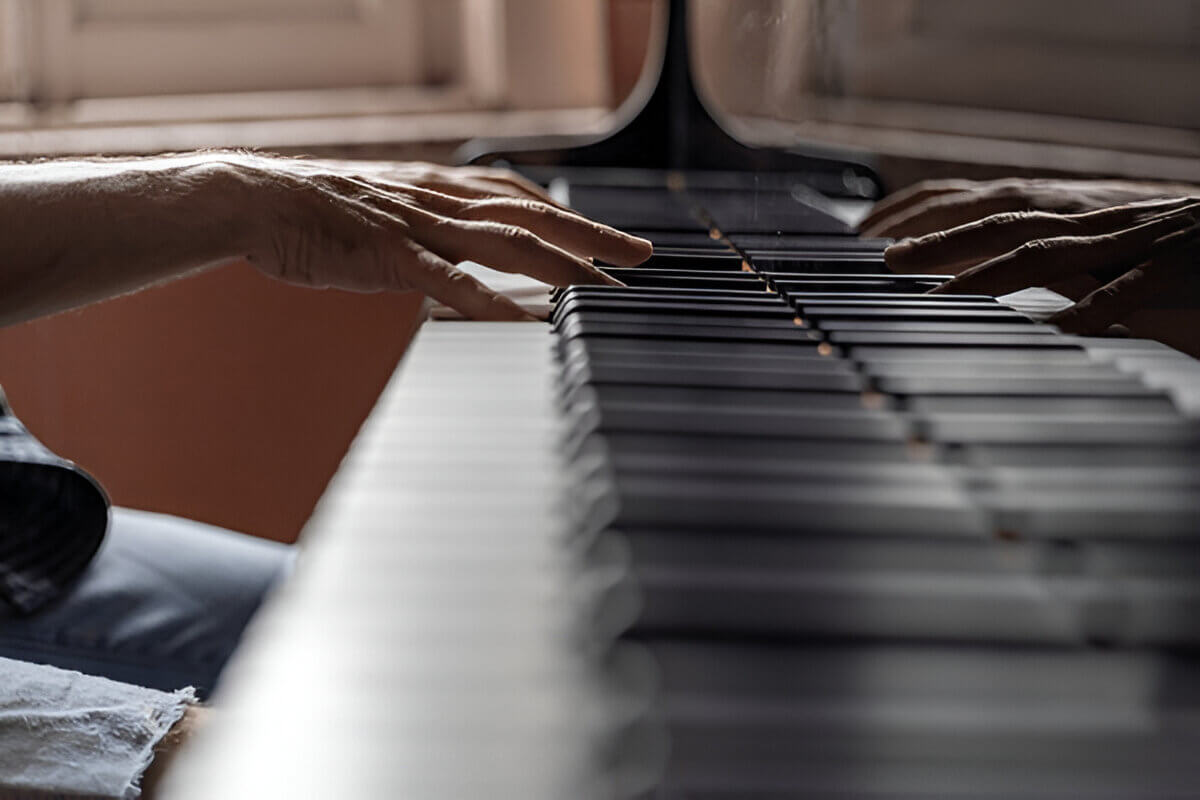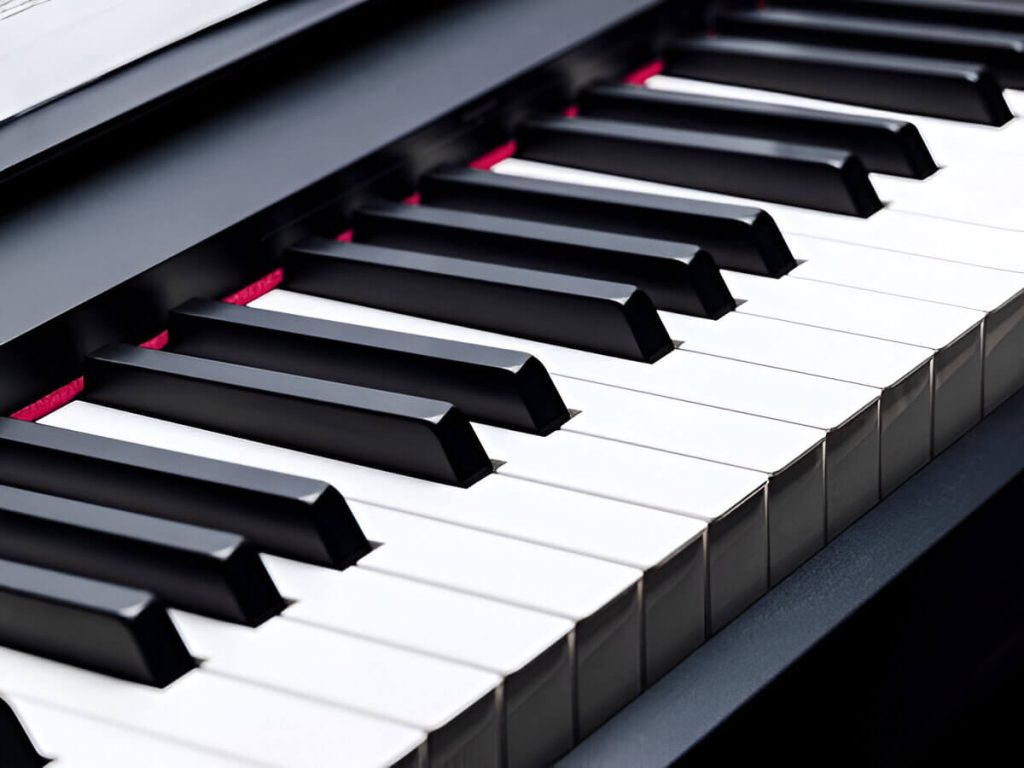
Pianos, with their rich sound, captivate musicians and audiences. Central to their design is the 88-key keyboard, a standard developed over centuries. This guide explores why this key count exists, its historical development, and how variations affect music composition and performance. From small digital keyboards to grand pianos, each offers unique possibilities for musicians. Exploring octave layouts and future keyboard innovations reveals how these changes shape music.
The Standard Piano (How Many Keys Does It Have?)
When discussing the standard piano, one of the most frequently asked questions is about the number of keys it possesses. Traditionally, a standard piano is equipped with 88 keys. This key count has become the norm in modern piano manufacturing, providing a comprehensive range that spans seven octaves plus a minor third, from A0 to C8.
The 88-key piano configuration includes both white and black keys, which are essential for producing the wide variety of notes required for classical and contemporary music compositions. This setup allows pianists to explore an extensive musical repertoire with rich tonal possibilities.
The journey to this traditional piano key count began in the early 18th century when pianos typically had around five octaves. Over time, manufacturers expanded the keyboard to meet composers’ demands for a broader range of notes and dynamic expression. By the late 19th century, Steinway & Sons had established the 88-key layout that remains standard today.
Understanding this evolution helps us appreciate why the 88-key model is favored by musicians worldwide and continues to be an essential tool for both learning and professional performance.
Why Do Pianos Have 88 Keys? Exploring the Evolution of the Keyboard

The piano, with its expansive 88 keys, is a marvel of musical engineering that has evolved over centuries to meet the demands of musicians and composers alike. To understand why modern pianos have 88 keys, we must delve into the history of piano keys and the evolution of the piano keyboard.
In the early days of keyboard instruments, such as the harpsichord and clavichord, keyboards typically featured a range between four to five octaves. These instruments were limited in their ability to produce a wide variety of pitches. However, as music compositions grew more complex during the Baroque and Classical periods, there was a pressing need for an instrument capable of offering a broader tonal range.
The invention of the fortepiano by Bartolomeo Cristofori in the early 1700s marked a turning point in this evolution. Initially equipped with about five octaves (around 60 keys), it provided dynamic expression by allowing players to vary their touch to produce different volumes, a significant advancement from its predecessors.
As composers like Beethoven began pushing musical boundaries in their works, they demanded instruments that could match their artistic vision. This led manufacturers throughout the late 18th and early 19th centuries to gradually expand keyboards from five octaves to six and then seven. By around 1880, Steinway & Sons had established what would become today’s standard: an impressive keyboard spanning seven octaves plus three additional notes totaling 88 keys.
This configuration not only accommodates most classical repertoire but also provides ample flexibility for modern compositions across various genres. Thus, while some specialty pianos may feature more or fewer keys depending on specific needs or design choices (such as digital pianos), traditional acoustic grand pianos continue adhering largely unchanged since reaching this benchmark over a century ago, both practicality and durability inherent within the design itself!
Variations in Key Count (From Smaller Keyboards to Full Concert Grands)
When exploring the world of pianos and keyboards, one quickly encounters the fascinating variations in key count that distinguish these instruments. Key variations on pianos are essential to consider, as they significantly affect playability and musical range. Traditional concert grand pianos typically boast a full set of 88 keys, offering the extensive tonal range required for complex compositions and dynamic performances. These instruments are often favored by professional musicians who seek the depth and richness only a full keyboard can provide.
In contrast, digital keyboards present a diverse array of key count options tailored to different needs and preferences. For beginners or those with limited space, smaller keyboard options with 61 or 76 keys offer an accessible entry point into music without overwhelming complexity. These compact models are ideal for learners who want to focus on developing their skills before transitioning to larger instruments.
For musicians on the go or those involved in electronic music production, portable digital keyboards with varying key counts provide flexibility without compromising functionality. Whether you’re composing at home or performing live, these versatile tools cater to a wide range of musical applications.
Ultimately, whether opting for a smaller digital keyboard or embracing the grandeur of a concert grand piano, understanding the importance of key variations can guide you in selecting an instrument that aligns perfectly with your musical journey.
The Impact of Key Count on Music Composition and Performance
The number of keys on a keyboard can significantly influence both music composition and performance. In the realm of music composition, the size of the keyboard dictates the range of notes a composer can access, which in turn affects the complexity and depth of their compositions. A full-sized piano with 88 keys offers a wide range, allowing composers to create intricate pieces with rich harmonies and dynamic contrasts. Conversely, keyboards with fewer keys may limit these possibilities but can encourage creativity within constraints by prompting composers to explore innovative ways to express their musical ideas.
In terms of performance, the impact of more or fewer keys becomes evident in the repertoire that musicians choose to play. A larger keyboard allows performers to tackle a broader array of classical and contemporary pieces that require extensive note ranges. This is particularly important for pianists who perform works by composers like Beethoven or Rachmaninoff, whose compositions often utilize the full span of an 88-key piano.
On smaller keyboards, performers may need to adapt or rearrange pieces originally composed for larger instruments, which can be challenging but also rewarding as it demands technical skill and artistic interpretation. Additionally, portable keyboards with fewer keys are often favored in live performances where space and transportability are considerations.
Ultimately, whether dealing with more or fewer keys on a keyboard, musicians must adapt their techniques and approaches accordingly. The choice between different keyboard sizes depends largely on personal preference as well as specific musical goals, be it composing complex symphonies or delivering captivating live performances within certain logistical constraints.
Understanding Octaves and Their Distribution Across the Keyboard
When you sit down at a piano, one of the first things you’ll notice is the repeating pattern of black and white keys. This pattern is fundamental to understanding the layout of keys on a piano keyboard and how octaves are distributed across it. An octave on the piano spans eight notes, starting from any key and ending on the next instance of that same note either higher or lower in pitch.
The standard piano keyboard consists of 88 keys, which include 52 white keys and 36 black keys. These are organized into repeating groups that represent different octaves. Each group contains seven white keys (C, D, E, F, G, A, B) and five black keys arranged in alternating groups of two and three. This configuration helps players easily navigate through different octaves while playing.
Understanding music octaves is crucial for pianists as it allows them to identify note relationships across different pitches. For example, if you start at middle C (often referred to as C4), moving up an octave will take you to C5. Each subsequent octave doubles in frequency compared to its predecessor, creating a harmonious sound that is foundational in music composition.
By familiarizing yourself with octave distribution on a piano, you can better understand musical scales and compositions. This knowledge not only enhances your ability to play but also deepens your appreciation for how music is structured across this versatile instrument’s keyboard.
Innovations in Keyboard Design and Functionality
The future of pianos is set to be as dynamic and innovative as the music they produce. As technology continues to evolve, so too does the design and functionality of keyboards, offering musicians new ways to express their creativity. One of the most exciting areas of development is in modern digital keyboards, which are incorporating cutting-edge innovations that enhance both playability and sound quality.
Future innovations in pianos are likely to focus on integrating advanced digital technology with traditional acoustic elements. This hybrid approach aims to deliver the rich tonal qualities of a classic piano while offering the versatility and convenience of digital features. For instance, some newer models already include touch-sensitive keys that simulate the feel and response of an acoustic piano’s hammers striking strings.
Evolving keyboard designs also highlight portability without sacrificing performance. Compact digital pianos with foldable or modular components allow musicians to easily transport their instruments while still enjoying a full range of expressive capabilities. Additionally, smart connectivity features enable seamless integration with apps and software for enhanced learning experiences or professional-grade recording sessions.
As these innovations continue to shape the landscape of musical instruments, pianists can look forward to an era where technology not only complements but also enhances their artistic expression. The future promises a harmonious blend of tradition and innovation, ensuring that pianos remain at the heart of music-making for generations to come.
Why Knowing Your Piano’s Key Count Matters for Musicians and Enthusiasts Alike
Understanding the key count of your piano is more than just a technical detail; it plays a crucial role in shaping your musical journey. For musicians, knowing whether their instrument has 61, 76, or the full 88 keys can impact their repertoire choices and performance capabilities. A piano with fewer keys might limit access to certain classical compositions that require the extended range of an 88-key piano, while a full-sized keyboard offers complete freedom to explore any piece.
For enthusiasts and beginners, being aware of the key count can influence learning and development. A smaller keyboard might be more accessible for newcomers due to its compact size and affordability, making it easier to practice at home without needing extensive space. However, transitioning to a standard 88-key piano eventually becomes essential for those who wish to fully experience the depth of advanced pieces.
Moreover, understanding your piano’s key count helps in making informed decisions when purchasing or upgrading instruments. It allows you to weigh factors such as portability versus versatility based on personal needs or aspirations. Ultimately, knowledge about your piano’s key count empowers you as a musician or enthusiast by aligning your instrument choice with your musical goals and ensuring an enriching experience in every practice session or performance.
